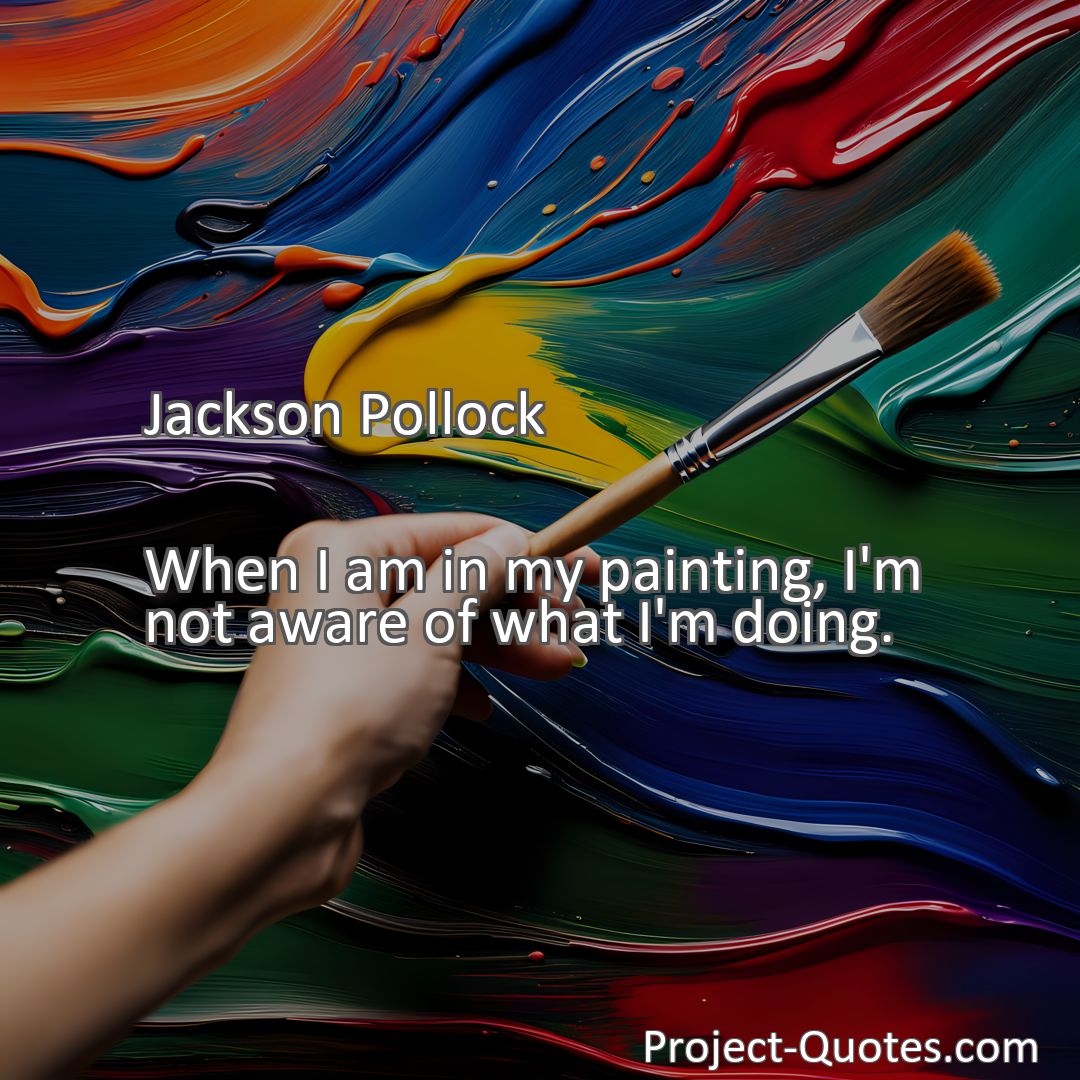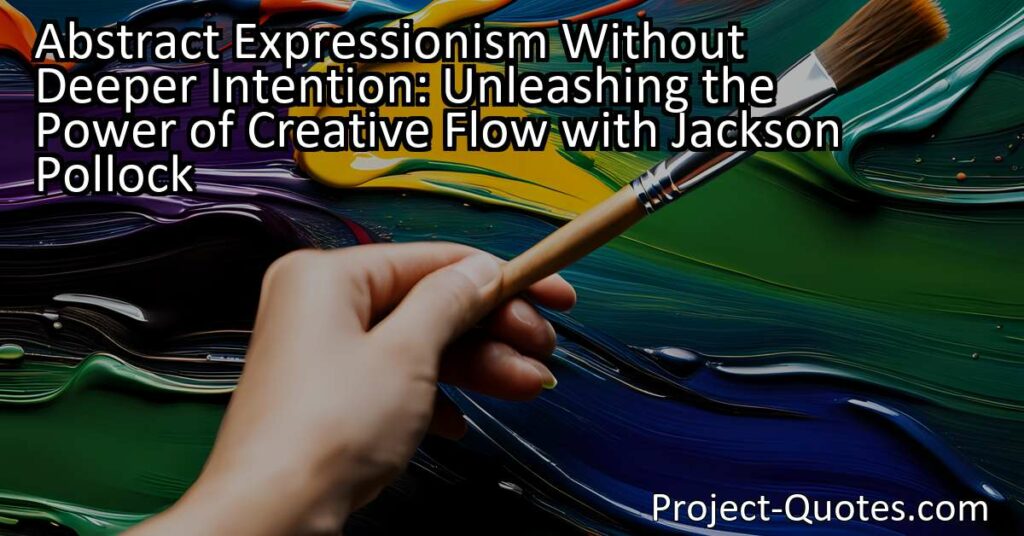When I am in my painting, I’m not aware of what I’m doing.
Jackson Pollock
Abstract Expressionism Without Deeper Intention: Unleashing the Power of Creative Flow with Jackson PollockExplore the profound connection between artist Jackson Pollock and his art as he embraced a state of flow and surrendered to the unknown. Discover how Pollock’s untethered expression and focus on the journey rather than the outcome challenged conventional notions of intention in abstract expressionism, inviting viewers to embrace the transformative power of art and their own creative potential.
Table of Contents
Meaning of Quote – When I am in my painting, I’m not aware of what I’m doing.
When it comes to expressing oneself through art, there are countless ways to do so. One artist who embraced a unique approach to painting was Jackson Pollock. With his famous quote, “When I am in my painting, I’m not aware of what I’m doing,” Pollock invites us into his artistic process and sheds light on the deep connection he felt with his creations.
Pollock’s words suggest that when he immersed himself in the act of painting, he entered a state of profound focus and flow. This sense of being completely absorbed in one’s creative process is a concept that many artists can relate to. It is as if the rest of the world fades away, and all that matters is the act of creation itself.
Imagine Pollock standing in front of a blank canvas, gripping a paintbrush, or even dripping paint from above with his iconic “drip technique.” As he dipped his brushes into various hues, a transformative experience unfolded. In those moments, his conscious mind took a back seat as his body moved instinctually, guided by an inner force that seemed to have a mind of its own. This untethered expression allowed him to connect with a deeper part of himself, beyond the daily distractions and limitations of the external world.
In this highly focused state, Pollock allowed his subconscious to take the reins, giving rise to what the art world came to know as his “action paintings.” This style, characterized by energetic and seemingly chaotic strokes, reflects Pollock’s uninhibited approach to his craft. He embraced spontaneity, allowing his emotions and physical movements to guide the creation of each piece without a preconceived notion of the final outcome.
One might wonder how an artist like Pollock, who claimed to be unaware of his actions while painting, managed to produce such profound and thought-provoking artworks. Was this merely an exploration of abstract expressionism without deeper intention? Or was there something more profound at play?
Although Pollock’s focus on the act of painting and being “unaware of what [he was] doing” may seem contradictory to our conventional notion of purposeful creation, it is essential to consider the interconnectedness of the mind, body, and spirit in artistic endeavors.
Art has always been a means of communicating thoughts, emotions, and experiences that may be difficult to put into words. For Pollock, the canvas became an extension of himself, a visual representation of his innermost thoughts and feelings. In a sense, his paintings became a window into his subconscious, a reflection of the depths of his being that he couldn’t fully grasp in his conscious state.
By being “unaware” of what he was doing, Pollock allowed his subconscious mind to take the lead. It was a surrendering to the creative flow that enabled him to tap into a deeper level of authenticity and honesty within his work. There was no deliberate attempt to control the outcome, but rather a surrender to the unknown, to the magic that unfolds when one becomes a vessel for creative expression.
In his art, Pollock managed to bypass the constraints of societal expectations and norms, breaking free from the boundaries that confined him in his everyday life. Through his paintings, he sought to convey a sense of freedom and liberation, both for himself as an artist and for those who encounter his works.
As viewers, we are invited to embrace the same form of surrender and openness when engaging with Pollock’s art. We are encouraged to let go of preconceived notions and interpretations, to allow the vibrant colors and dynamic compositions to evoke emotions and create personal connections.
Pollock’s quote also brings to light the transformative power of art in general. When we engage in any form of creative expression, whether it be painting, writing, dancing, or playing an instrument, we enter a state of flow where time seems to vanish. It is in these moments that we find solace, joy, and a sense of purpose. We become lost in the process, disregarding external pressures and expectations, and instead, allowing our true selves to be unveiled.
In a world that often prioritizes productivity and efficiency, Pollock’s approach to art serves as a gentle reminder that there is value in losing ourselves in the act of creation. It teaches us that true fulfillment can be found not in the outcome but in the journey itself. By immersing ourselves fully in our chosen artistic medium, we open ourselves up to a world of possibilities, where self-expression knows no bounds.
So, the next time you find yourself captivated by a work of art, whether it be a Pollock masterpiece or any other creation, take a moment to reflect on the artist’s journey. Consider the deep connection they felt with their craft and how they allowed themselves to be led by their subconscious. As you do so, you may discover a renewed appreciation for the power of art and the incredible potential that lies within each of us to unlock our own unique expressions.
I hope this quote inspired image brings you hope and peace. Share it with someone who needs it today!


